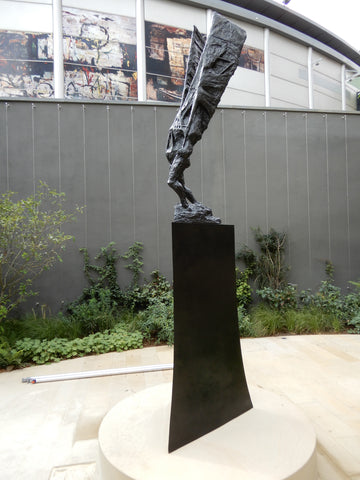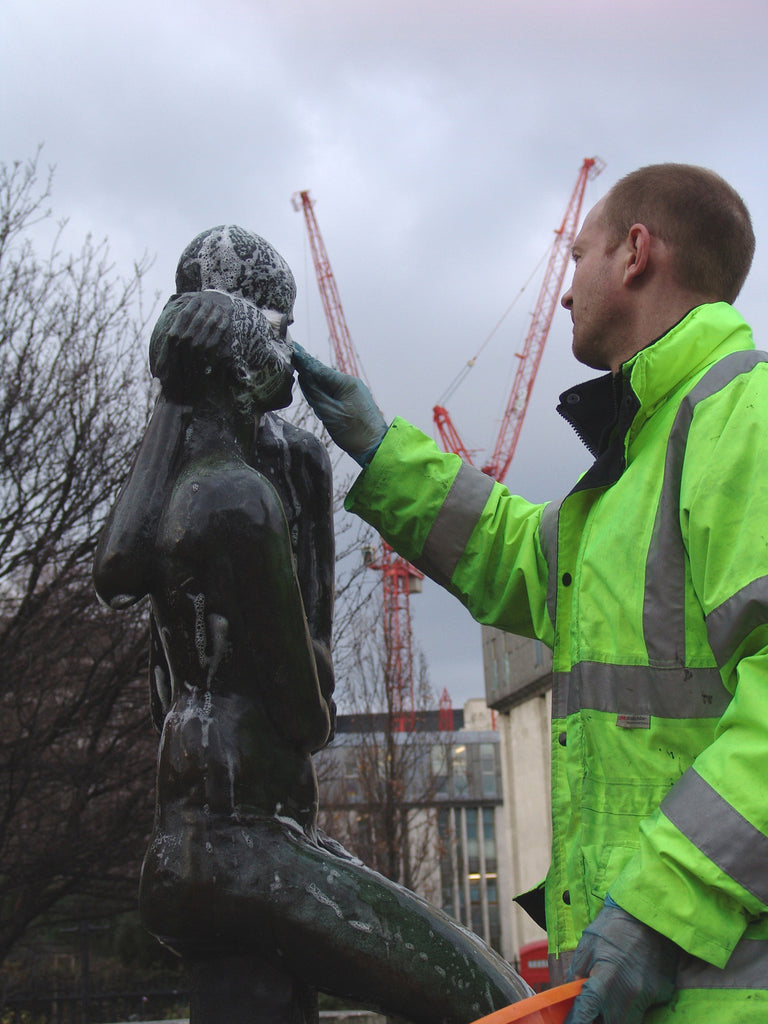CITY OF LONDON PUBLIC STATUARY
Client: The City of London Corporation
Location: Throughout the City of London
 We have worked for the City of London since the year 2000, when we carried out a full condition survey of all monuments, fountains and plaques within the Client's care, which formed the basis of a carefully planned programme of conservation/restoration. We have now conserved the majority of the historic sculpture, plaques and fountains on the streets and in public gardens of the City that fall under responsibility of the Corporation and under contract we now maintain over 80 of these objects annually or bi-annually.
We have worked for the City of London since the year 2000, when we carried out a full condition survey of all monuments, fountains and plaques within the Client's care, which formed the basis of a carefully planned programme of conservation/restoration. We have now conserved the majority of the historic sculpture, plaques and fountains on the streets and in public gardens of the City that fall under responsibility of the Corporation and under contract we now maintain over 80 of these objects annually or bi-annually.
Below are a few examples of work that we have carried out for this client:
SURVEYS AND ADVICE:
 Full condition survey of all the public sculpture, memorials, fountains, drinking fountains and plaques within the City itself and within City properties elsewhere in London, including Epping Forest and Hampstead Heath.
Full condition survey of all the public sculpture, memorials, fountains, drinking fountains and plaques within the City itself and within City properties elsewhere in London, including Epping Forest and Hampstead Heath.
We provided detailed information and photographs and input this information into a bespoke database that we developed to hold all the data we gathered. The collation of such essential data into a manageable form proves invaluable in the management of the conservation and ongoing maintenance of such a large collection.

Survey of 170 City Open Spaces to identify and report on significant objects found (such as plaques, tombstones, statuary, memorials and ironwork), followed by detailed advice including priorities for treatment and ongoing monitoring and care regimes for the objects found. We also wrote a full conservation policy document for ironwork and alerted the Client to any Health and Safety concerns found.

Survey of the eight cast-iron Police Call Posts in the City. We then provided a full conservation plan for the restoration and maintenance of all the posts, including the replacement of all missing parts. These posts were manufactured in the early 1930's by British Ericsson and ceased to be used in the 1960's. The upper hatch opened to give access to the telephone; the middle door opened horizontally to provide a writing surface and the larger, lower storage cupboard contained first aid kit etc. The posts allowed the public to call the Police station and were also used for the station to contact the Policeman on the beat in that area - the red signal light would flash if he was required to contact his station.
CONSERVATION AND MAINTENANCE:
A selection of some of the statuary we have conserved and regularly maintain is illustrated below.


The Royal Fusiliers City of London Regiment Memorial, by Albert Toft, 1920
Maternité by Aimé-Jules Dalou,1878


Icarus and The Minotaur by Michael Ayrton, both 1973


The Peace Memorial Fountain, Francis Butler (Architect) and John Birnie Philip (Sculptor), 1873
Captain John Smith by John Renwick, 1960, based on an original by William Couper, 1907


The London Troops Memorial by Alfred Drury, 1920
Statue of George Peabody by W.W. Story, 1868


Young Lovers by George Ehrlich, 1950/51
The Shakespeare Monument (Memorial to John Heminge and Henry Condell) by Charles J. Allen, 1895


The National Submarine War Memorial by F. Brook Hitch, 1922
Statue of John Wilkes by James Butler RA, 1988


The Broker by Stephen Melton, 1997 (temporarily removed to safety during demolition and building works)
Hodge the Cat, a monument to Samuel Johnson's cat, by Jon Bickley, 1997
Further reading:
Public Sculpture of the City of London, by Philip Ward-Jackson









